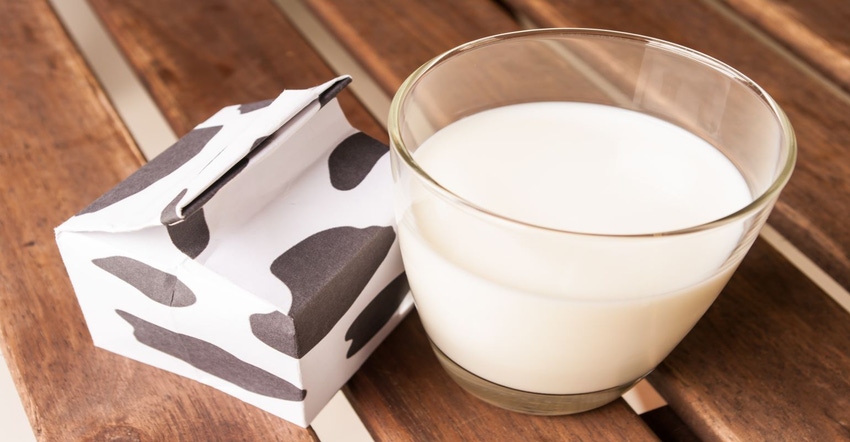Authentic dairy keeps going with the flow
Real dairy products aren’t going anywhere, even with the introduction and rising popularity of plant-based alternatives.

Plant-based dairy alternatives have gone—in a matter of mere years—from being “alternative” to establishing themselves, in the minds of many, as what “dairy” really is.
If the diversity in the supermarket dairy case doesn’t illustrate that clearly enough, perhaps market research from the Plant Based Foods Association, The Good Food Institute and SPINS will.
Namely, the groups found that not only did dollar sales of plant-based milk and cheese grow by a respective 4% and 7% in 2021 as sales of dairy milk and cheese both declined by 2%; the data also show that plant-based ice cream and frozen-dessert sales skyrocketed 31% over the prior two years to hit $458 million in total.
All of which is encouraging for the plant-based space but could be a downer for dairy.
Or maybe not? After all, IBISWorld pegged the 2022 value of the U.S. dairy-product industry at a whopping $120.5 billion, with growth—modest growth, but growth nonetheless—in the forecast, proving that traditional dairy is hardly down for the count.
None of which surprises Ben Rutten, business manager, milk, DSM Food & Beverage. “Dairy is uniquely placed as a popular category that’s familiar to consumers—who doesn’t remember drinking milk as a child?” he asked. “But dairy’s true power lies in its versatility. With an impressive nutritional profile, neutral taste and formulation ease, dairy is, and will remain, a firm a favorite.”
Dairy not down
Favorite or not, the past couple years have been a slog for the sector.
“The constant influx of innovation from the plant-based space has chipped away at established dairy brands’ share,” conceded Amr Shaheed, technical service manager, food applications, Innophos. “Supply chain bottlenecks from Covid-19 only compounded the issue—opening the door for many to switch to alternatives when their favorite products weren’t appearing consistently on shelves.”
But rumors of dairy’s demise have been greatly exaggerated, he continued, noting that “despite the media buzz that plant-based alternatives have received, the market for dairy milk still dwarfs the plant-based market by a wide margin.”
What’s more, added Max Maxwell, manager, market intelligence, Glanbia Nutritionals, “Overall dairy consumption has grown from 538 pounds to 655 pounds in 2020,” per USDA data. “Yogurt has grown nearly 700% to 14 pounds and cheese nearly doubled to 40 pounds, which is the equivalent of more than 400 pounds of milk. So, the diary sector remains strong and large.”
One needn’t be a USDA analyst to understand why; as Maxwell put it, “Great taste remains the most important trend in food, and dairy products provide great-tasting, nutritious food and beverage options that appeal to most consumers.”
Perfect timing
In fact, given the major trends driving consumers today, now might be dairy’s time to shine.
Consider the enduring appeal of “healthy” and “natural.” Innova Market Insights named the two qualities the most important characteristics consumers sought out in food and beverage products back in 2020. And as luck would have it, dairy naturally oozes both—no fortification needed—which is a claim most plant-based challengers can’t make.
That’s ironic in light of alt-dairy’s widely held better-for-you and “cleaner” reputation vis-à-vis traditional dairy. But it takes a lot of processing and formulation savvy to turn peas or oats into something resembling, say, ice cream. So, it makes sense that “some of the criticism around plant-based dairy has to do with it being less clean label than perceived,” noted Jennifer Stephens, VP marketing, Fiberstar Inc. By contrast, “Many dairy products use very few additives and stabilizers, unlike their alternatives.”
“Another trend that ties in with natural and clean is local,” Stephens continued. “It’s common to see dairy products touting their use of locally sourced ingredients like artisan cheeses and spreads that promote local farmers. For many, supporting local food businesses is key to a strong community and that’s hard to do with dairy substitutes that don’t have a tie to a local image.”
But dairy’s strongest suit might be its nutritional value—and especially its protein profile. For example, traditional dairy milk naturally packs around 8 grams of protein into each 8-ounce serving, with ultrafiltered and super-ultrafiltered varieties delivering per-serving levels as high as 13 to 20 grams. Few plant-based substitutes come even close absent fortification.
Then there’s dairy protein’s quality. Claus Bukbjerg Anderson, senior category manager, dairy, Arla Foods Ingredients (AFI), applauded plant-based foods’ role in driving protein demand, but, he said, “The quality of different protein sources varies dramatically.”
Here again, dairy takes the lead. While whey protein and milk both sport a protein digestibility-corrected amino acid score (PDCAAS) of 1.0, only soy among plant proteins can make the same claim; meanwhile, other plant proteins like pea, oat and whole wheat come in considerably lower, with a PDCAAS of 0.67, 0.57 and 0.45, respectively (J Nutr. 2015;145[9]:1981-1991).
Updating dairy
Dave Hoyda, principal dairy scientist, Tate & Lyle Food & Beverage Solutions, maintained dairy “still holds a distinct advantage over plant-based alternatives because of dairy’s superior taste, texture and nutritional quality,” he stated. “Consumers understand this and now’s the time to bring innovative dairy products to the market.”
Brands with an eye to the future are doing just that. Megan Patterson, marketing communications manager, Fonterra Americas, elaborated: “The industry understands what consumers want and we’re making sizable changes to meet a spectrum of needs, whether for sports, weight management, healthy aging or more. Plus, dairy is so adaptable to forms like pouches, shakes and bars that meet a variety of lifestyle requirements.”
To continue reading this article and for additional related content, check out the “Dairy’s big splash: Traditional staple moves into the future” digital magazine.
Kimberly J. Decker is a Bay Area food writer who has worked in product development for the frozen sector and written about food, nutrition and the culinary arts. Reach her at [email protected].
About the Author(s)
You May Also Like






